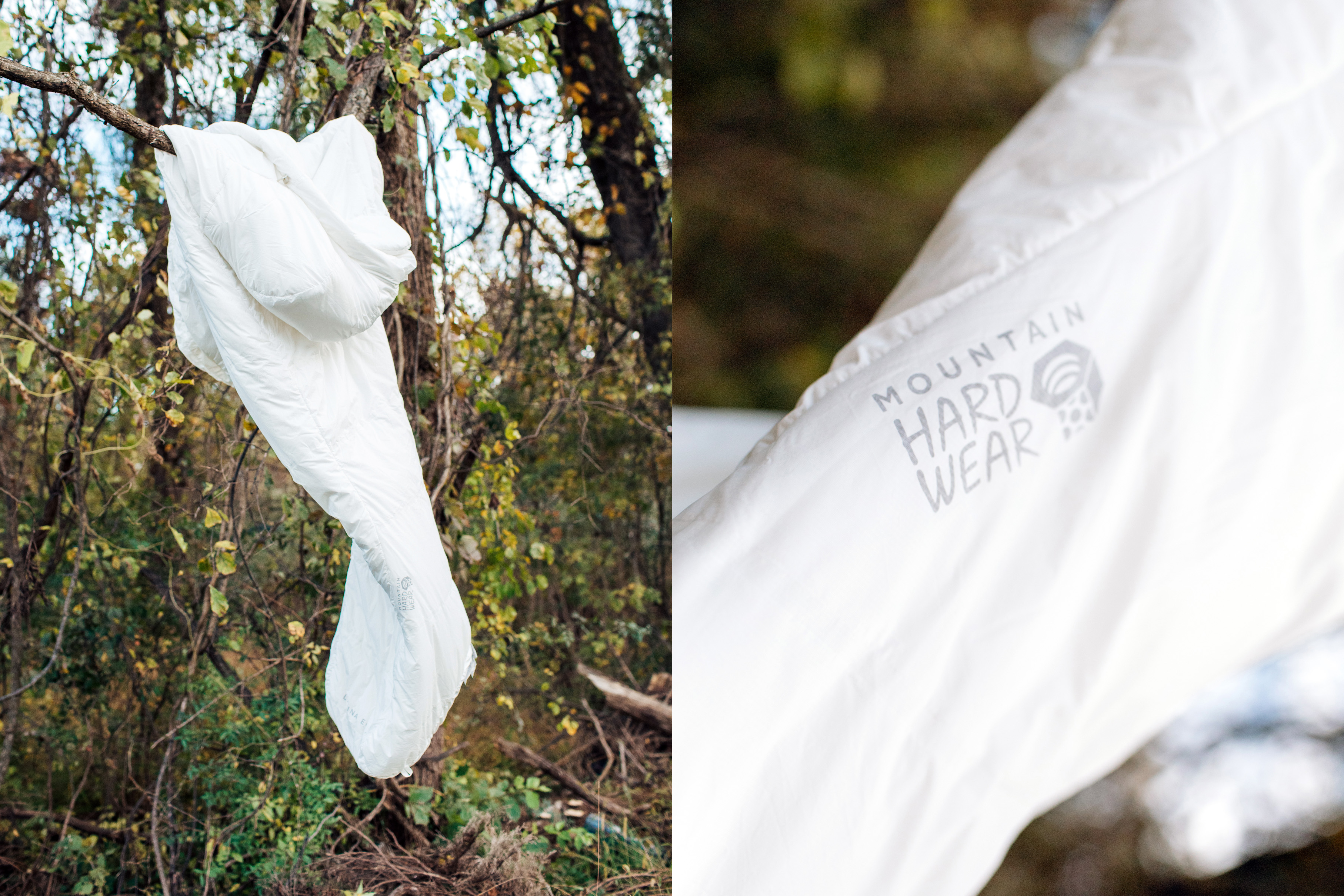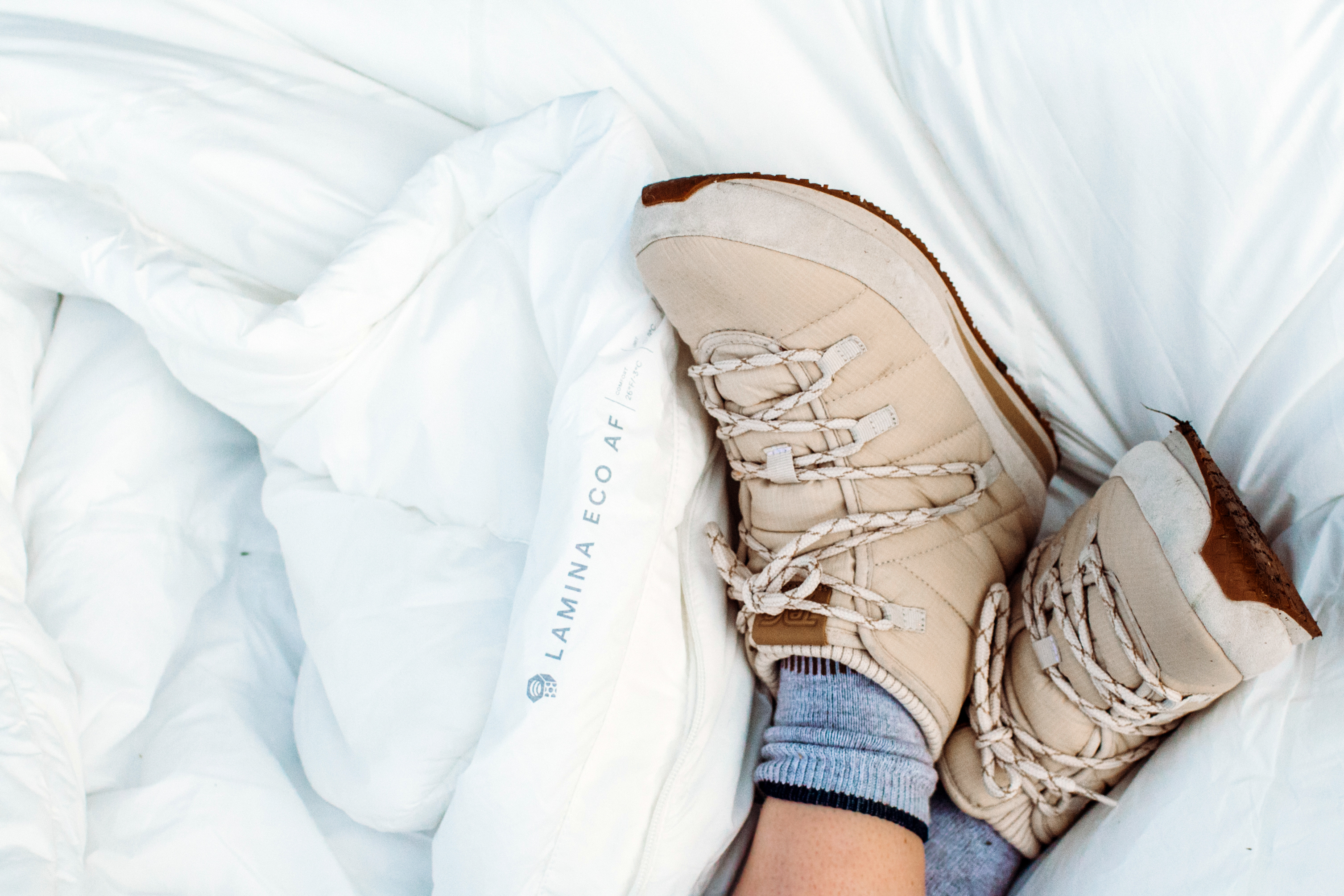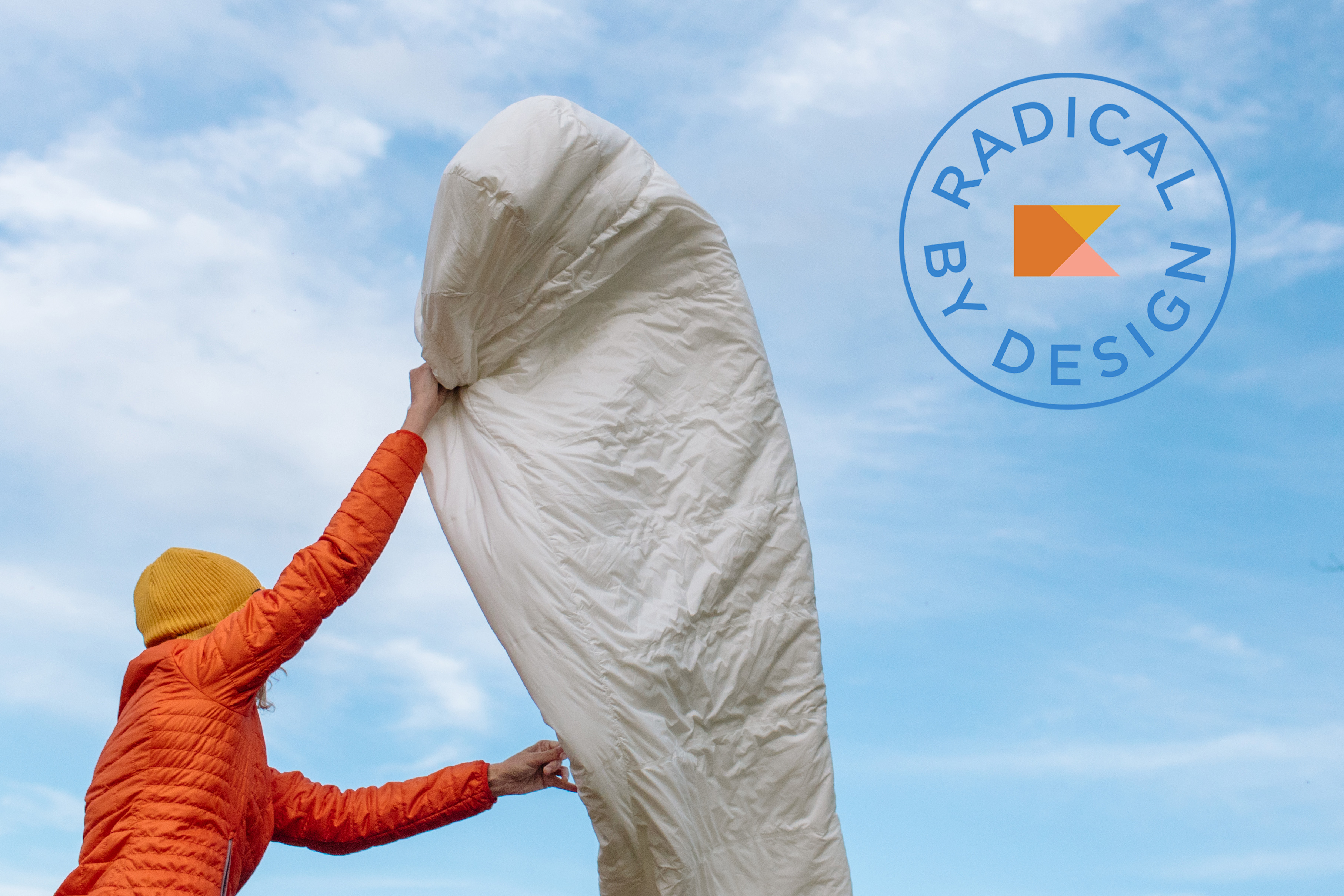In 1998, hip-hop mogul Sean Combs — aka Diddy — threw the first in a long series of lavish celebrity gatherings that would come to be known as the White Parties. The rules were simple: you must be both rich and famous, and you must dress in head-to-toe white. Rumor has it guests were turned away for wearing lesser shades of cream.
If we’ve learned anything from Diddy, it’s that if you’re going to make something completely white, you better go for it. It might just help save the planet — at least, that’s the thinking behind Mountain Hardwear’s Eco AF Lamina sleeping bag.
For spring 2019, Mountain Hardwear decided to scrap its entire line of equipment and rebuild it from the ground up, which allowed designers the fresh start they needed to rethink existing designs and give them eco-friendly makeovers. The Lamina family of sleeping bags, which had been around for a decade, would now get recycled insulation. That morphed into both recycled insulation and recycled shells. Then designers added recycled linings. Eventually, the Mountain Hardwear team decided to take sustainable manufacturing as far as they could and see what happened. They ended up with an entirely white sleeping bag: the Eco AF Lamina. Which, at first glance, feels like the antithesis of everything we know about what constitutes “outdoor” gear.
“Our retail accounts were like, ‘No one is going to buy this’,” remembers Devon Lambert, Mountain Hardwear’s Equipment Production Line Manager.

Yet, all-white gear could be gaining ground among an environmentally conscious outdoor industry: turns out all those colorful jackets and bags are pretty bad for the planet. According to The World Bank Group, about 20% of all water pollution comes from textile dyeing treatments alone. There’s also the issue of water waste — dying just one sleeping bag uses up to 80 liters of water. Other brands are already catching on. Columbia’s OutDry Ex Eco Jacket is made from dye-free and recycled fabric, while Nike and Patagonia are looking into waterless dyeing technologies. The BYBORRE x adidas capsule collection features muted tones void of excessive processing and dyes.
“By really pushing it and leaving the sleeping bag undyed, we save water and chemicals normally used in the dyeing process,” explains Lambert. “We felt like the consumer who is going to buy this bag wouldn’t care about a little dirt. Dirt would tell the story of the bag’s life and the adventures it’s been on.”
Mountain Hardwear decided to take a gamble on that idea — if their customers really care about the planet, then who cares about a little dirt? To top the brand’s reduced water footprint, the bag itself is still remarkably durable, treated with a durable C0 DWR finish and made with zero stitching so there’s nowhere for water to collect and break down its insulation. Even the trim, zippers, storage bag and compression sack are all made from recyclable materials (including recycled ocean plastics). As far as warmth goes, it’s toasty. The 15-degree bag is a mummy-style sack with a draft collar you can tuck around your neck to prevent warm air from escaping. It also just feels nice, soft and lofty against your skin where other bags feel sticky or slippery. The gamble seems to be paying off.

“We were curious to how it was going to land,” says Lambert, “but what we’ve heard time and time again is that people are drawn to the bag in stores. The most sustainable thing a consumer can do is never buy another sleeping bag. We’re helping them do that by creating something that will last.”
Why It’s Radical by Design: By leaving the Lamina Eco AF sleeping bag undyed, Mountain Hardwear is taking a polarizing risk to help educate consumers and inspire other brands to seek out more sustainable design techniques. It may be completely white, but with such a high recycled material content and reduced water footprint, this bag is as green as it gets.
XX Johnie Gall
